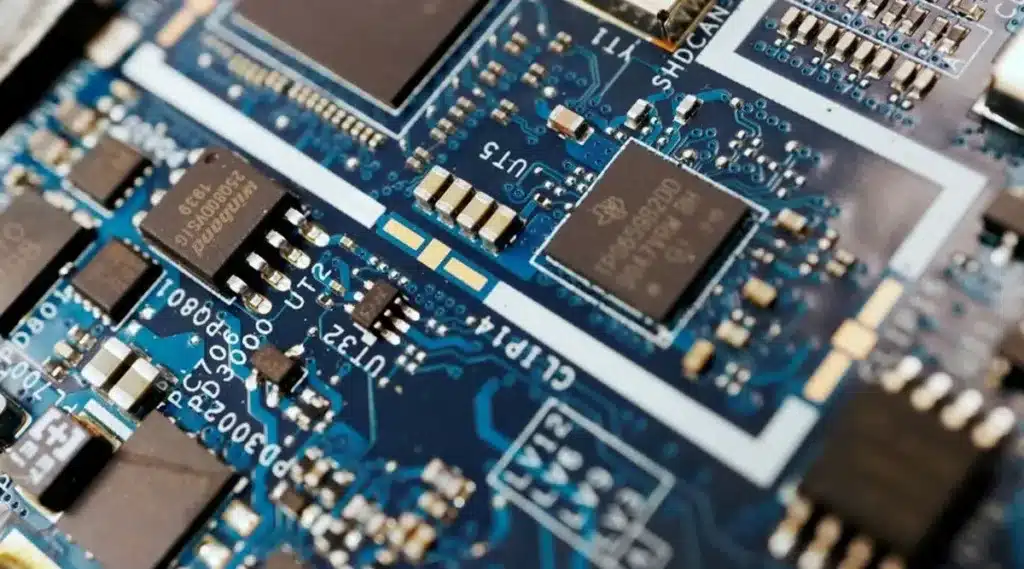In a bold move to assert its dominance in the global chip race, India has recently greenlit an investment of up to $15.2 billion (1.26 trillion Indian rupees) to establish three cutting-edge semiconductor plants. This strategic initiative, geared towards challenging the prowess of tech giants like China and Taiwan, is poised to reshape India’s standing in the semiconductor industry.
Tata Group and Power Chip’s Semiconductor Fab Facility: A Game-Changer
At the forefront of this ambitious venture is the collaborative effort between India’s Tata Group and Taiwan’s Power Chip. The result is the country’s first fab facility, strategically located in the Dholera region of Gujarat. This facility, projected to commence construction within an accelerated 100-day timeline, is anticipated to revolutionize chip manufacturing.
Unveiling the Fab Facility’s Potential
The semiconductor fab facility aspires to carve its niche by possessing the capacity to produce an impressive 50,000 wafers per month. With an annual target of manufacturing 3 billion chips, it aims to cater to diverse market segments, including high-power computers, electric vehicles, telecom, and power electronics. Noteworthy is its focus on general-purpose applications, steering clear of the current industry buzz around AI chips.
Assam’s Semiconductor Unit: A Strategic Move Towards Diversity
Complementing the Gujarat facility, the Indian government has given the nod to a $3.2 billion investment in a semiconductor assembly, testing, marking, and packaging unit in Assam. Executed by Tata Semiconductor Assembly and Test, this will be the nation’s third semiconductor unit, boasting a formidable daily production capacity of 48 million chips.
Diversified End-Market Focus
This Assam-based unit is set to supply chips to an extensive array of sectors, including automotive, electric vehicles, consumer electronics, telecom, and mobile phones. The export potential is vast, encompassing partnerships with Indian, American, European, and Japanese companies.
Strategic Collaboration with Renesas Electronics and Stars Microelectronics
India is set to collaborate with Japan’s Renesas Electronics and Thailand’s Stars Microelectronics. This partnership, in conjunction with Indian company CG Power, aims to produce specialized chips in Sanand, Gujarat. Targeting niche sectors such as defense, space, electric vehicles, and high-speed trains, this specialized chip facility is slated to achieve a daily production capacity of 15 million chips.
A Symbiotic International Alliance
The investment of $916 million by Renesas Electronics and Stars Microelectronics signals a collaborative effort towards innovation and technological advancement. This not only bolsters India’s semiconductor capabilities but also strengthens global ties in the pursuit of cutting-edge chip technology.
Overcoming Historical Challenges
India’s foray into bolstering its domestic semiconductor sector is not new. The 2021 $10 billion incentive program aimed at attracting chipmakers faced challenges but has paved the way for revised strategies. Today’s announcements underscore a commitment to fostering a conducive environment for semiconductor manufacturing.
Addressing Industry Skepticism
The previous lack of engagement from international companies was multifaceted, ranging from a complicated application process to doubts about India’s existing ecosystem. Efforts to involve major players like TSMC, Qualcomm, MediaTek, and Intel continue, highlighting a persistent commitment to building a robust semiconductor industry.
Employment Impact and Future Outlook
The three newly approved semiconductor plants and the Micron facility are projected to generate 20,000 advanced technology jobs directly and an additional 60,000 indirect jobs. India’s long-term vision for development is evident in the outlined $7 billion incentives and a 20-year program design. With approximately 300,000 design engineers already contributing to global chip design, India is poised for sustained success.
Attracting Foreign Investment
The Indian government’s commitment to offering substantial incentives, coupled with announcements from companies like Foxconn and AMD, signals a broader strategy to attract foreign semiconductor manufacturers. With a designed 20-year program, India’s semiconductor initiatives are set to evolve, making it a formidable player in the global tech landscape.
India’s bold $15.2 billion investment underscores its commitment to transforming into a powerhouse. The multifaceted approach, encompassing state-of-the-art facilities, international collaborations, and strategic incentives, positions India as a key player in shaping the future of semiconductor technology. As the nation embarks on this transformative journey, the global tech community watches with anticipation.
